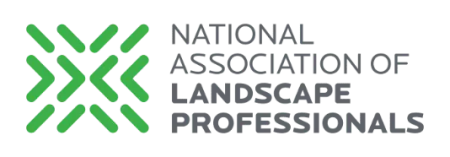Why You Shouldn't Pull Weeds
When weeds appear in your lawn, your first instinct might be to pull them out by hand. While this may seem helpful, it actually makes profession weed control less effective. Here's why:
- Weed Control Works Through the Leaves: Our weed control products are desinged to be absorbed through the leaf surface of the weed. Once applied, the herbicide travels down into the roots, ensuring the entire plant is destroyed. If you pull the weed before or right after treatment, there isn't enough leaf surface left for the product to work properly.
- Patience is Key, Let Weeds Die Naturally: It can take several days to a few weeks for the weed to completely die after treatment. During this time, you'll see it gradually wilt, turn yellow or brown, and stop growing. Pulling too soon interrupts this process and can allow the weed to regrow from its roots.
- No Need to Remove Dead Weeds: Once a weed is fully dead, there's no need to pull it. Dead weeds naturally dry up and break down into the soil, returning organic matter to your lawn. This saves you time and keeps the lawn ecosystem in balance.
What Customers Should Do Instead
- Leave weeds alone after treatment—trust the process.
- Monitor progress over the coming weeks as weeds fade away.
- Focus on prevention by keeping your lawn healthy with proper watering, mowing, and fertilization.
Prepping Your Lawn for the Fall
Keep Mowing – But Lower the Blade
- Continue mowing bring the blade to 2–2.5 in height for the last cuts of the season.
- Shorter grass helps prevent matting under snow and reduces the risk of disease.
Rake or Mulch Leaves
- Rake them up regularly or mulch them with your mower. A thin layer of shredded leaves can act as a natural fertilizer – don’t let them smother your lawn.
Liquid Aerate your Lawn
- Fall is the best time to liquid aerate compacted soil.
This allows air, water, and nutrients to reach the roots.
Overseed Thin/Bare Areas
- Fill in bare spots and thicken your lawn by overseeding.
Fertilize for Root Growth
- Apply a fall fertilizer – this strengthens roots, improves winter hardiness, and boosts spring green-up.
Water Deeply Before Winter
- Lawns need about 1 inch of water per week until the ground freezes.
- Deep watering encourages strong root development for winter survival.
Winterize Sprinkler System
- In Colorado (and other cold climates), blow out sprinklers by late October. Protects pipes and prevents costly repairs.
Benefits of a Super Soil Stimulant Program
Our Super Soil Stimulant program is designed to improve the foundation of your lawn—its soil. The granular humic acid in this program:
- Improves soil structure by binding soil particles together, creating healthier soil that allows roots to spread more easily.
- Enhances water retention so sandy soils hold more moisture and clay soils drain more effectively, keeping lawns balanced.
- Boosts microbial activity by feeding beneficial soil organisms, creating a living, thriving soil environment.
Nutrient Availability
One of the greatest benefits of the Super Soil Stimulant program is how it unlocks nutrients already in your soil:
- Increases nutrient uptake by chelating (binding) key elements like iron, calcium, and magnesium, so your lawn and landscape plants can absorb them better.
- Reduces nutrient loss by holding nutrients in the root zone instead of letting them wash away with irrigation or rainfall.
- Optimizes fertilizer efficiency, helping customers get more results from each fertilizer application.
Plant & Lawn Growth Benefits
Your lawn and landscape plants thrive with the added support of our Super Soil Stimulant program:
- Strengthens root systems, allowing grass, trees, and shrubs to grow deeper and more resilient root networks.
- Builds stress tolerance, making your landscape tougher against drought, heat, cold, and disease.
- Produces greener, healthier turf, with more vibrant color and overall vigor that your neighbors will notice.
Sprinkler Time Clock Tips
- Adjust times based on weather (wind, rain, heat) and solar exposure (full sun areas need more water than shady areas)
- Check sprinkler coverage monthly
- Water deeply and infrequently to promote healthy roots
- Water overnight or early morning (done by 7:00am) to reduce evaporation and prevent disease
Sprinkler Types
Rotary/Rotor
- Spring/Fall: 30-40 minutes per zone
- Summer: 45-60 minutes per zone
Spray
- Spring/Fall: 10-15 minutes per zone
- Summer: 15-25 minutes per zone
Schedule to Follow
- April: 1-2 days per week—turn on by April 15th recommended
- May - Early June: 2-3 days per week
- Early June - Early September: 3-4 days per week
- Early September - Early October: 2-3 per week
- Early October - Turn Off: 1-2 days per week—water through October 31st recommend
The Benefits of Liquid Aeration
What is Liquid Aeration?
Liquid aeration is a modern, eco-friendly alternative to traditional core aeration. Instead of pulling plugs of soil, a liquid solution is applied to the lawn that breaks up compacted soil, increases water movement, and promotes stronger root development—all without the mess of soil cores left behind.
Healthier, Deeper Roots
Liquid aeration loosens compacted soil at a microscopic level, allowing oxygen, water, and nutrients to reach deeper into the root zone. Stronger roots mean a greener, thicker, and more resilient lawn.
Better Water Absorption & Efficiency
By opening up soil pathways, liquid aeration improves water penetration. This helps lawns use less water by reducing runoff and puddling—an especially important advantage in Colorado’s dry climate.
Safe for Sprinklers, Pet Fences & Cables
Because liquid aeration requires no heavy machinery or mechanical tines, it won’t damage underground sprinkler systems, invisible pet fences, or buried TV/internet cables. It’s the worry-free way to aerate your lawn.
Eco-Friendly & Soil-Safe
Liquid aeration promotes natural soil biology, encouraging beneficial microbes that improve long-term soil health. It’s a sustainable way to care for your lawn.
Longer-Lasting Results
Because liquid aeration penetrates the entire soil profile—not just where cores are pulled—it often provides longer-lasting benefits for root growth and soil structure.
Safe for Families & Pets
Once applied and dried, the treatment is safe for kids and pets to enjoy the lawn right away.
Winter Lawn & Tree Care Tips
Water Your Trees in Winter
- Trees need moisture even while dormant.
- Deep water once per month on warmer days when the ground isn’t frozen.
Special Lawn Watering for South & Southwest Lawns
- Lawns facing south/southwest dry out faster in winter sun.
- Light watering once per month prevents stress and reduces risk of turf mites. Just 15–20 minutes per area.
Manage Fall Leaves to Protect Trees
- Thick leaf layers trap moisture and spread fungal tree diseases.
- Rake & remove leaves from lawns and landscape beds.
- Or mulch them finely with your mower to recycle nutrients back into the soil.
Other Winter Prep Tips
- Aerate and fertilize in fall for stronger spring growth. Most of your root growth happens in the fall.
- Schedule sprinkler blowouts before hard freezes.
- Apply fall weed control to reduce spring dandelions.






